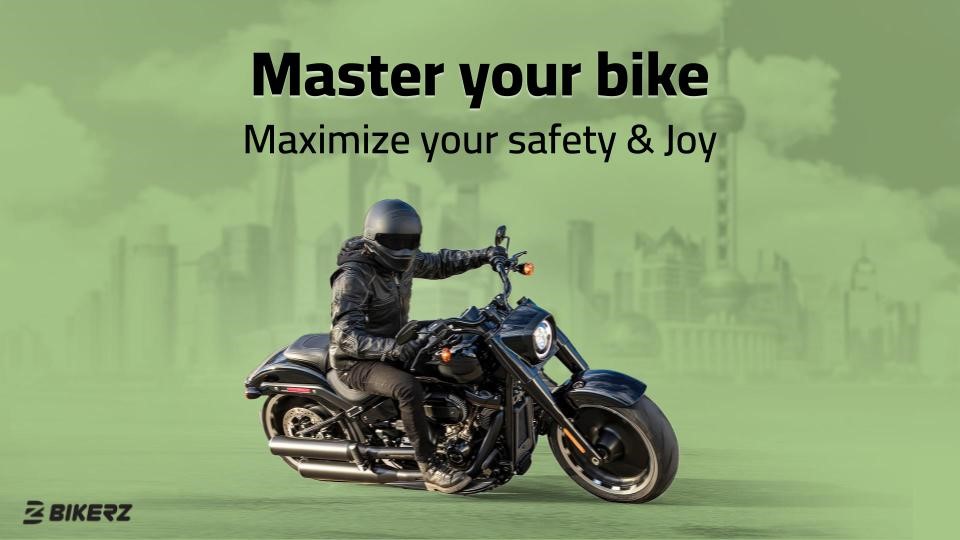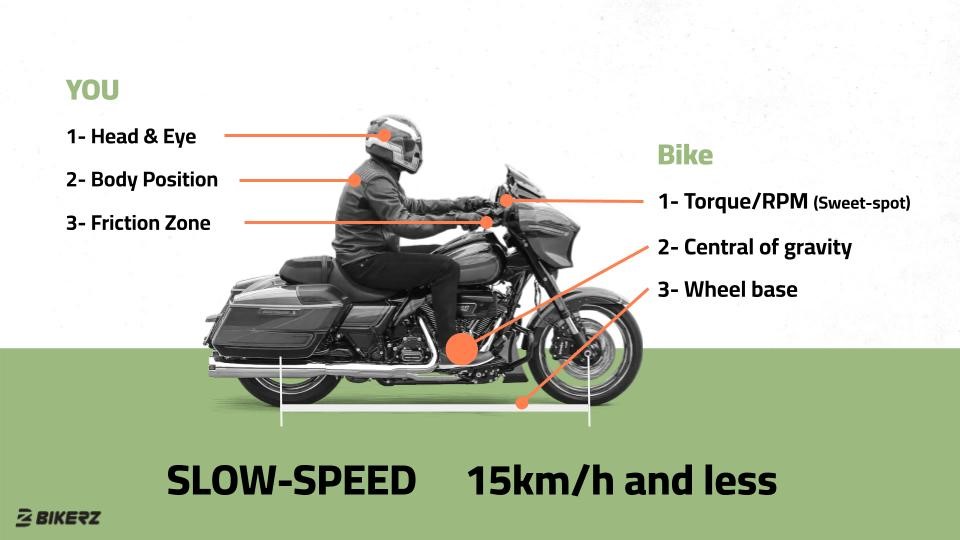Motorcycle riding is more than just a thrilling experience—it’s a skill that requires precision, control, and confidence. Developing good posture and balance on a motorcycle forms the foundation of safe and enjoyable riding. Whether you’re navigating tight turns, cruising highways, or mastering low-speed maneuvers, understanding and applying proper posture and balance techniques is critical to your success as a rider.
At Bikerz, we don’t just train riders; we empower them. Through our mentorship program, we’re dedicated to helping Saudi riders—whether you’re brand loyal to Harley, Suzuki, BMW, or just getting started—unlock their potential and ride with confidence.
This guide will walk you through the fundamentals of developing good posture and balance on a motorcycle while sharing insights from our expert training sessions.
Why Posture and Balance Matter
Proper posture and balance go beyond looking cool on your bike. They help you stay in control, reduce fatigue, and respond effectively to road challenges. Here’s why they’re essential:
- Safety: Good posture reduces the risk of accidents by ensuring maximum control over your motorcycle.
- Efficiency: Balanced riding minimizes unnecessary energy output, making long rides more comfortable.
- Performance: Mastering posture and balance improves overall handling, especially in challenging terrain or weather conditions.
Riding in Saudi Arabia, with its unique mix of urban streets, highways, and desert landscapes, demands an emphasis on these fundamentals.

Understanding the Basics: The Role of Core Strength
Before hitting the road, it’s important to understand how your body impacts motorcycle stability. Core strength is key to maintaining balance while riding. Your core muscles help stabilize your body, keep you upright, and support movements such as leaning into turns.
Strengthening your core through exercises like planks, Russian twists, and bridges not only improves posture but also enhances overall riding performance. Remember, the better your physical foundation, the easier it will be to master advanced techniques.
For more info visit the link
Proper Riding Posture
To ride safely and comfortably, follow these steps to achieve the ideal riding posture:
1. Feet Placement
Keep the balls of your feet on the foot pegs for better control and weight distribution. Refrain from resting your heels on the pegs.
2. Back and Shoulders
Sit upright with a slight forward tilt to engage your core. Roll your shoulders back and keep them relaxed to avoid stiffness over long rides.
3. Arms and Hands
Your elbows should be slightly bent, not locked, allowing for smooth throttle and brake application. Maintain a light but firm grip on the handlebars—no white knuckles here.
4. Knees and Thighs
Grip the tank gently with your knees. This helps stabilize your lower body and reduces fatigue during extended rides.
5. Head and Eyes
Always keep your head up and look ahead. Your eyes should focus on the road and where you want to go. Head movements play a critical role in maintaining balance, especially around corners.
Balance Techniques
To stay centered on your motorcycle, consider these tips:
- Low-Speed Maneuvers
Practice walking your bike forward and backward to get comfortable with its weight. Use the clutch to control movement during slow-speed scenarios.
- Counterbalancing
When making tight turns or riding at slow speeds, shift your body weight to the opposite side of the bike to maintain balance.
- Throttle Control
Smooth throttle input is key to stability. Avoid quick jerks or sudden accelerations that might unsettle your balance.
- Look Through Turns
Your eyes lead your bike. Focus on where you want to go, not on obstacles, to maintain smooth movement and balance.
Common Mistakes to Avoid
New and experienced riders alike often fall into the trap of bad habits. Avoid these common mistakes to improve your riding experience:
- Slouching or leaning too far back can throw off your balance.
- Gripping the handlebars too tightly, causing unnecessary fatigue.
- Focusing on the immediate road in front instead of looking ahead.
- Ignoring body positioning during turns.
Exercises for Developing Good Posture and Balance on a Motorcycle
Building strength and flexibility can significantly enhance your riding capabilities. Below are simple workouts you can do at home or the gym, tailored for motorcycle riders.
Core Workouts
- Plank (Hold for 30–60 seconds): Strengthens your core and helps maintain upright posture.
- Russian Twists (3 sets of 15 reps): Improves flexibility and balance for turning maneuvers.
- Leg Raises (3 sets of 12 reps): Engages lower abdominal muscles used during riding.
Balance Training
- Single-Leg Stance (Hold each leg for 30 seconds): Mimics stability challenges riders face during stops or low-speed scenarios.
- Balance Board Training (5–10 minutes daily): Enhances reaction time and balance awareness.
Flexibility Exercises
- Hamstring Stretches (Hold for 20 seconds per leg): Prevents tightness when seated for long durations.
- Shoulder Rolls (10 reps in each direction): Reduces tension in your shoulders during rides.
Real-World Application: Riding in Saudi Arabia
Saudi riders face unique challenges, from navigating crowded urban environments to thrilling desert adventures. Maintaining good posture and balance is especially critical when tackling these distinct terrains.
Desert dunes demand a forward-leaning posture and light throttle control to prevent sinking into soft sand. On busy city streets, quick reaction times and precise balance during stops become invaluable.
This is where Bikerz mentorship program shines. Through structured sessions focused on fundamentals and advanced techniques, we ensure riders in Saudi Arabia are prepared for any scenario.
Here’s What Riders Can Expect with Our Mentorship Program
Session 1 Highlights:
- Master the friction zone for smooth starts and stops.
- Practice walking your bike for better low-speed control.
- Build confidence with controlled starts, stops, and road rides.
Session 2 Highlights:
- Learn counterbalancing and weight transfer for tight turns.
- Improve cornering with proper braking and body positioning.
- Gain confidence with practical exercises like U-turns and emergency stops.
By the end of our second session, riders are equipped with skills to achieve mastery over their motorcycles, ensuring safer, more enjoyable rides.

Elevate Your Riding Experience by Developing Good Posture and Balance on a Motorcycle
Proper posture and balance aren’t just technical skills—they’re tools that unlock your full potential as a motorcycle rider. When combined with expert guidance and dedicated practice, any rider, beginner or experienced, can enhance their control, safety, and enjoyment on the road.
At Bikerz, we’re not just about training riders. We’re a community built on inclusivity and shared passion. If you’re ready to take your riding to the next level, join our mentorship program today.
Get started with Bikerz—where technique meets adventure.

